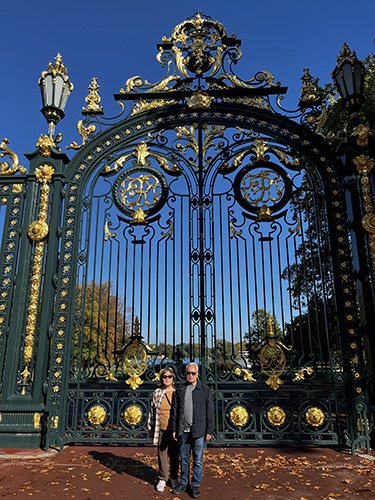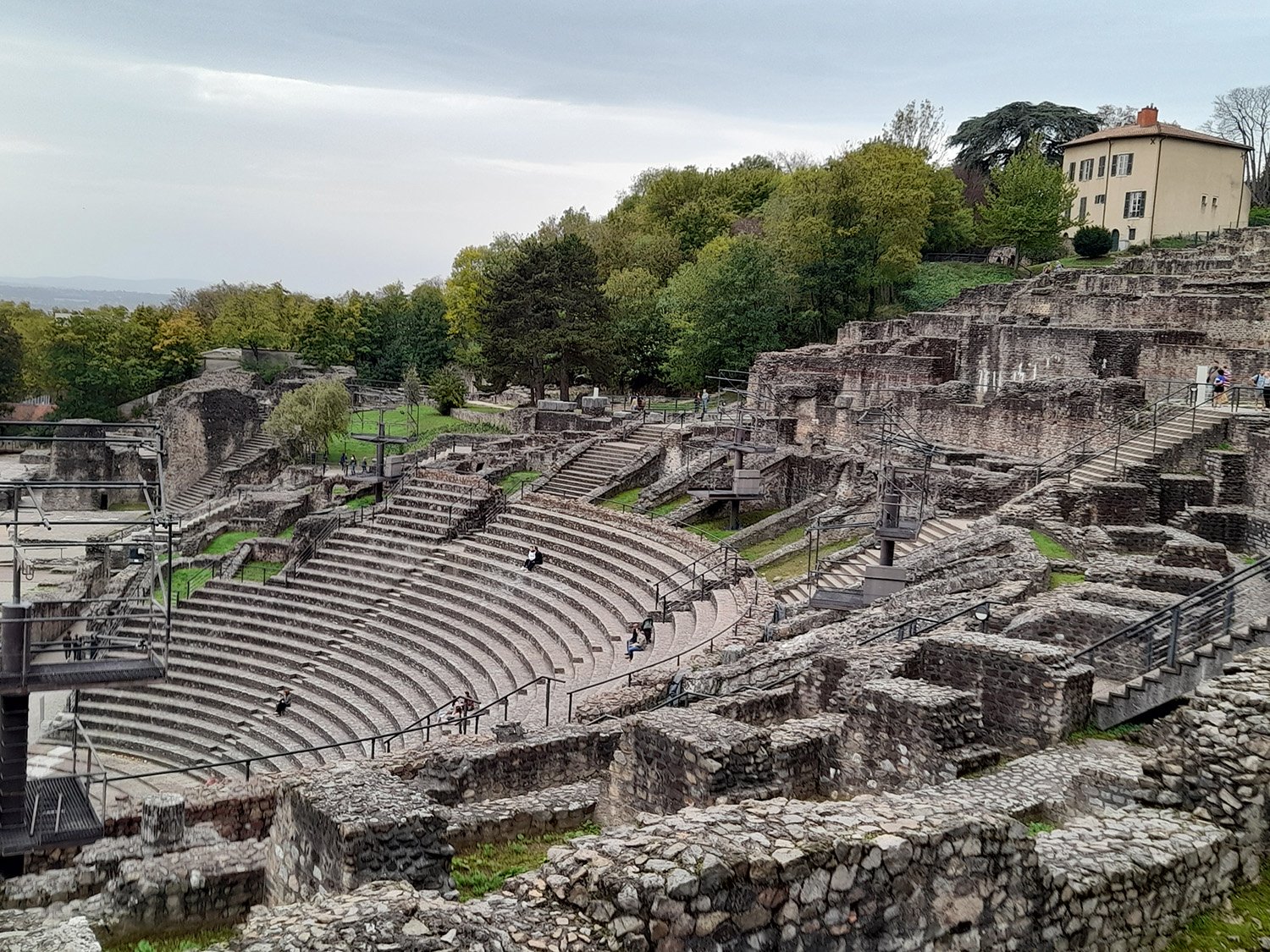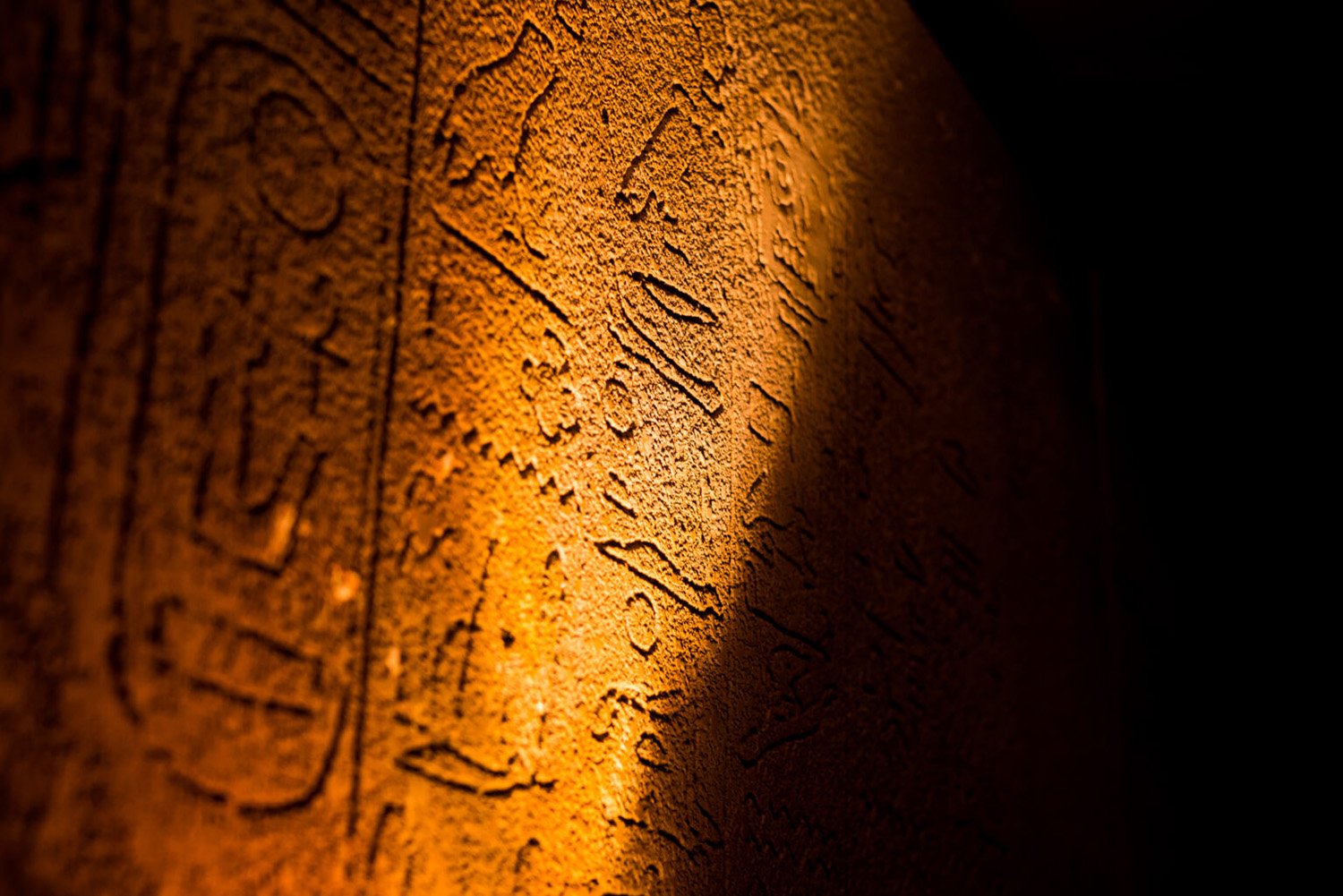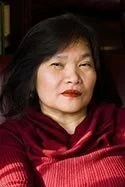A Tale Of Three Cities: Lisbon, Lyon and Dijon
/Flight schedule post at Lisbon airport (Photo by Patty Rivera).
Lost and Found in Lisbon
Joe asked if we should go forward or not, handicapped by our missing credit and bank cards. I said I could always ask for a card replacement from our local bank on the morning before our trip. Which I did, minus the credit card which would take days to arrive. By then, we would have gone Alliance Francaise. Even if I were to hitch a ride to Vive le France, I would have done so just to be with our granddaughter whom we have not seen in person all these two and a half years of the COVID pandemic.
And so, we took our doubts and apprehensions as we boarded the TAP Air Portugal plane to Lisbon, our stopover before proceeding to Lyon. On the plane, I munched my worries by tapping into the Practice Portuguese series of videos on the backseat monitor. In seven hours, I would have the opportunity to learn some words and sentences for the two-day Lisbon layover on our return trip.
Joe, meanwhile, busied himself with the plane’s geolocation map, monitoring how far—kilometers, hours and minutes—we were from our stopover, Lisbon. As well, he would point out cities and countries as if he were holding a class in geography.
Practice Portuguese saved me from counting the hours we were seated on the plane. The two guys who were supposed to teach talked in crisp, funny and easy-to-follow sentences. It was as if I was listening to real people talk that I did not notice they were teaching me the basics of their language. No formal blackboard-and-chalk-and-pointer. No long sentences that drown you in incomprehension. Pretty soon, I was laughing with them as they exchanged jokes and little doses of learning as the hours flew.
Those who want to teach or to learn another language can benefit from this method. It allows learners to gain confidence to tread through unknown waters because the events described come from real-life situations.
Seven hours later.
Arriving in Lisbon became a horror of sorts.
Joe said he would check our connecting flight to Lyon and go to the washroom. We were at the McDonald’s area: yes, a popular spot in the Lisbon airport. He made sure I was seated comfortably at one of the empty tables before he went on his errand.
Food court at airport in Lisbon, Portugal (Photo by Patty Rivera).
Fifteen minutes passed by and no sign of Joe. Another 20 minutes and I went in panic mode. I scanned the area where he had disappeared in a crowd of people having fast food. Still no sign of Joe.
Would this be a re-creation of a movie we once watched on Netflix, where the husband left the wife for an errand and never came back?
Reserving angst and dread and all the holy terrors of abandonment, I held fort. I stepped back and regrouped. Scrutinizing the EMERGENCY NUMBERS for TRAVELLERS in Portuguese written in a post close by, I memorized the numbers just in case something untoward happened.
My Practice Portuguese lessons helped immensely. I knew that SIM was not the card you insert on your cellphone. It means “Yes” in Portuguese. Also, my courses with Señora Estanislao in Spanish 1 and 2 at university allowed me to resurrect root words that sounded familiar in Portuguese.
I am sure I would not have been the only person left and abandoned in an airport. But on that early October morning when Joe left me in a strange land for an errand and did not return for an hour, I was invoking all the names of the saints I could remember.
In fact, he had the same thought, when he finally found me an hour later, steps away from the spot where he thought he had left me. For some reason, when he got out of the washroom, he had turned left and went on another route, instead of just heading straightaway to the spot where he had left me.
“I even went to the departure section which was more than twenty minutes away. I took the wrong turn,” he said, sheepishly.
He probably forgot that when in a foreign country, to always remember the landmarks or the cross points. But this was no time for chiding, so I brushed off all blame.
To celebrate our luck of finding each other again (ha, ha!), we decided to have breakfast. We had hamburgers and fries…and BEER!
“I ordered a root beer, and they gave me this!” Joe pointed to the beer can on the tray and could not help laughing.
As we took the plane to Lyon, our destination, we thought this trip could turn out to be a different kind of adventure.
Lyon, France—old vs. new ways
Since our daughter, Issy, wanted to cook healthy meals for her family, and I didn’t like to cook or to look clueless while our meals were prepared, we reached a compromise. I volunteered to take care of our meals either via take-out or restaurant meals once a week. It worked.
Neighborhood market in a Lyon suburb (Photo by Patty Rivera)
Our granddaughter, Tinky, had the most practical advice for grumpy and excitable grannies like me: “Relax, Lola!”
In Lyon, she peppered her gentle admonition as we traversed unknown streets and Metro stations when we took her out for museum or park visits. She was the warm welcome of Lyon that made days and nights of our visit gratifying and grace-filled.
In France, our granddaughter was handy in translating conversations and signs for us. But not always. Sometimes she would chide me, “I am not Google, Lola!” She then promised to give me lessons in French if she had the time.
By the gates of the Tête d'Or Park (Photo courtesy of Patty Rivera).
But we scarcely had the time as she was still busy attending school and would be pooped out by the time she was home. Instead, we made up for lost time through our every-other-night reading sessions.
This time, I would be all-ears as she told countless made-up stories of characters she wove from her imagination.
When it was my time to tell an ORAL STORY, not read from the books, I got the jitters. I could not remember my folktales of long ago. There is a vast time difference between seven and seventy. I thought it would be easy to just recall any story. It was not. At all. The accumulation of memory and forgetting and the wide expanse of absence can cloud the mind. The scars and stars of time can either do wonders or seal opportunities for remembering forever.
After my attempt to share a made-up oral story, our granddaughter asked me, point-blank: Is that the story from Rumpelstiltskin, Lola? Oops, I said. And to myself, Nabuking! (Fact-checked!) She knew many stories, as well as the myths of Greek and Roman gods and goddesses, from all her reading.
Ancient Roman ruins close to the Basilica of Notre Dame de Fourvière, in Lyon, France. Historic Lyon stands on the site of the ancient Roman city on the hill of Fourvière called Lugdunum, later called Lyon, founded in 43 BC, and was the capital of Gaul (Photo by Patty Rivera).
To make up for my omission, I gave her short lessons in ABAKADA, the Filipino alphabet, a few days before we left. Since she knew how to read and write, it was easy for her to link vowels and consonants. In a breeze, she repeated BIBI, DEDE, NANAY, TATAY. I wanted to teach her MOMO, but that would have scared her. I promptly erased the thought.
The Basilica of Notre Dame de Fourvière in Lyon (Photo courtesy of Patty Rivera)
Dijon: The ‘Must’ in the Mustard
A week after seeing the sights in Lyon, our daughter treated us to a three-day trip to Dijon with her family, all the more exciting because it would be our granddaughter Tinky’s chance to hit the Owl Trail, which I shall tell more later.
It was a two-hour trip north by train, passing through towns and cities that straddled the Côte d’Or hills, amid fertile vineyards along the confluence of the Ouche and Suzon rivers.
Of course, like everyone else, we have heard of Dijon, and the eponymous mustard for which the place became famous.
Before discovering Dijon, however, I had another revelation. Before boarding the train, I had to take a short pitstop at the Part-di-Dieu Metro station. I had to fish out one Euro to get in the washroom. Once I got in, I was amazed by the sparkling clean amenities that a simple washroom offered. The toilet was clean and the floors shiny and bright. I remembered a friend of old times who said he could sleep in the bathroom of a Baguio hostel. It was that clean. For one Euro, it felt great to be rid of the day’s burdens and cares.
We arrived in the early afternoon and walked all the way up to Hotel La Cloche in downtown Dijon. A mere three blocks away, and No. 2 in our granddaughter’s Owl Trail. The transformation from farm to village to a city had some magical effect. Once we walked down the elevators and walked on the cobblestone road to the city center, it felt like stepping onto another time. Some Wizard of Oz or Harry Potter kind of magic shrouded us.
Magenta lights clad the Grand Hotel La Cloche in Dijon, France. Some of the famous visitors of La Cloche: Russian writers Tolstoy and Turgenev, not to mention the legendary couple Zelda and F. Scott Fitzgerald (Photo by Patty Rivera).
Parcours de la Chouette
Parcours de la Chouette or The Owl Trail, is a 22-stop tour around the historic city center, with each sight labeled by a brass way marker with the tiny owl motif.
The marker for the first Parcours de la Chouette or The Owl Trail (Photo by Patty Rivera).
The inspiration for this owl comes from Dijon’s symbolic owl sculpted on the northside of the Church of Notre-Dame in the 1500s.
We passed by this stone, which has been buffed shiny by centuries of people touching it for good luck and making a wish. Those who have touched the stone advised us “to touch it with the left hand when you pass it on your lefthand side, or your wish won’t come true.”
Having made our wish, we sauntered on to other sites on the list. The guide was a remarkable marker of buildings, sites and structures of historic and cultural significance. It was like visiting an old village and gawking at the past and present simultaneously.
For our seven-year-old granddaughter, it became a maze that needed to be followed to completion.
Joe and our granddaughter walking home from the festival of revelers (Photo by Patty Rivera).
Playing detective, she checked out the sites in her small map and consulted with her mom and dad to check which routes to pursue, following the signs on the sidewalk. On her map, instead of 22 she had 30 or so sites, so we followed her as she negotiated each step.
As we stopped on the last two churches on her map, we heaved a sigh of relief knowing we had made a mini-Santiago de Campostela pilgrimage in the span of two and a half hours without breaking any bones. Of course, our apo was generous with her words of encouragement: You can do it, Lola, as we occasionally paused on our haunches to see if our body and soul were still together.
The same grit and determination seemed to pervade our granddaughter when we visited the Museum of Fine Arts, which is free for visitors. My kind of museum. The palace of the dukes of Burgundy in the center of the old city palace is now the hôtel de ville (town hall) and contains the Musée des Beaux Arts.
While I marveled at the early 13th to 15th century paintings, our apo accompanied her mom and dad in looking through the 18th to 20th century works of art spread in various galleries. Even though the paintings depicted particular eras, they seemed as fresh as the day they were painted—the vivid colors, the patinas, the chiaroscuros of light and dark mingling with early November’s dappled and supple light.
Perhaps the size of the paintings—small and not as imposing as the floor-to-ceiling paintings that we often see in museums—allowed viewers to get a more intimate view of the artist’s work. Viewed at eye level, they invite rather than flaunt and therefore provide the viewer an insider’s vista of the paintings’ subjects and their landscapes. The artist’s vision is at once also the beholder’s vision. Van Gogh’s paintings in Musée d'Orsay are of the same modest size. Leonardo da Vinci’s Mona Lisa in the Louvre is even smaller.
Of Souls, Ghouls and Revelers
The highlight of our trip to Dijon, aside from the walks along old streets and antique shops, was our visit to the Church of Notre-Dame (built between 1220 and 1240) on All Soul’s Day, which was also the birthday of Joe’s mother. We offered a prayer for her and other dearly departed souls amid the angelic singing of the church’s choir. Who would think that we would be allowed this opportunity to attend Mass at this historic and ancient church and pay homage to people who have passed on?
On the eve before All Souls’ Day, our granddaughter joined a group of Halloween revelers as they marched through the center of the city to celebrate the onset of winter and the time when the other world was present. Dressed as witches, goblins and ghosts to ward off evil spirits, the children sang, danced and went trick-or-treating from the store vendors who offered them candies and goodies in return.
The Ghost of Tutankhamun in La Sucrière, Lyon
November 26th of last year was the hundredth anniversary of an extraordinary discovery in the Valley of the Kings, the Egyptian region famous for its many tombs of Pharaohs, nobles and royal families.
On November 26, 1922, to be exact, the British archeologist Howard Carter and his billionaire sponsor Lord Carnarvon, entered for the first time in 3,200 years the burial site, and found the intact Tutankhamun tomb.
I have not been a fan of ancient diggings and gravesites, but since we have a granddaughter who is an avid explorer of facts and artifacts via the National Geographic for Kids subscription we gifted her a year ago, we tagged along with her and her mom and dad as we dove into “the heart of Egypt” for a Pharaonic exploration. The heart of Egypt proved to be a three-floor dive into La Sucrière (The Sugar Mill), an exhibition site by the banks of the Saone River, in Lyon’s Confluence district.
The exhibition, “Tutankhamun: The Discovery of the Forgotten Pharaoh,” recounts one of the greatest archeological adventures ever: Howard Carter’s discovery of the tomb of the cursed young Pharaoh.
I had read accounts of this adventure many years ago but only began to warm to it when I recently discovered the writings of classicist and linguist Dr. Susan Brind Morrow who, for 20 years, translated to English the found poetry in hieroglyphs in her seminal book, The Dawning Moon of the Mind: Unlocking the Pyramid Texts.
Buried in the Egyptian desert some 4,000 years ago, the Pyramid Texts are among the world's oldest poetry. First found in 1881, the hieroglyphs have been misconstrued by Western Egyptologists as a garbled collection of primitive myths and incantations, relegating to obscurity their radiant fusion of philosophy, scientific inquiry and religion.
In her book, Morrow provides a stunning and original interpretation of an ancient system of poetic, religious and philosophical thought. Her work has recast the Pyramid Texts as a coherent work of art, arguing that they should be recognized as a formative event in the evolution of human thought.
Morrow explains how to read hieroglyphs, contextualizes their evocative imagery and interprets the entire poem. Thus, my renewed interest in hieroglyphs, not to mention my granddaughter’s fascination with their cursive strokes and turns.
Path to Tutankhamun Exhibit in La Sucrière, Lyon (Photo by Patty Rivera)
So here we were, probing in the dark as Carter and early explorers did a century ago. We came to be mesmerized and we got it in full measure: from the many treasures from the Pharaonic period, including an unraveling of the mysteries surrounding Tutankhamun’s death and tomb.
Aside from the many pieces crafted by the Supreme Council of Antiquities Replica Production Unit, the different reconstructions of the three burial sites offered an exceptional moment of magic. From the materials used for the wall paintings to the mold on the walls of the tomb, no detail was spared. We were transported to the quotidian world the ancient Egyptians created 33 centuries ago.
Also on view were 242 exceptional objects from the Egyptian Museum in Cairo’s workshops and authenticated by the Ministry of Egyptian Antiquities.
They say the opening of the tomb of Tutankhamun awakened a mystical force that had been buried for centuries.
Our young granddaughter has kept what she has seen in the tiny hieroglyphic sketches she has drawn.
Maybe if she follows her curiosity in the footsteps of Howard Carter, she and other youngsters like her (they came in droves during our visit) may yet help protect the world from the curses that threaten it.
The Tuk Exhibit runs through April 24, 2023.
Patty Rivera writes from Toronto, Ontario, in Canada.
More articles from Patty Rivera














